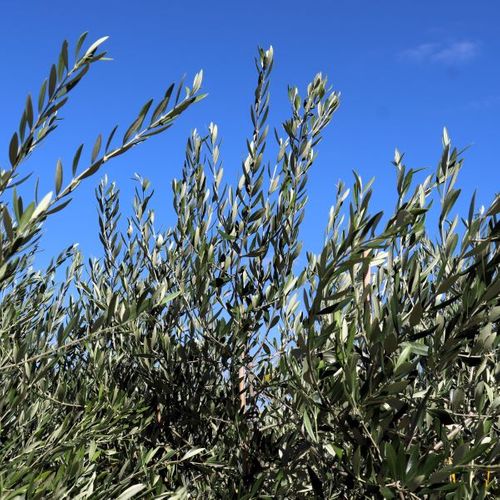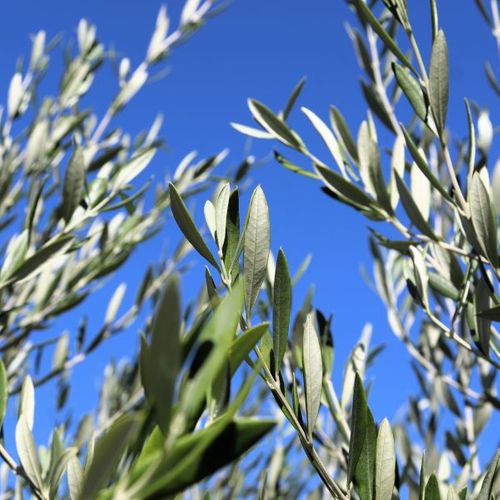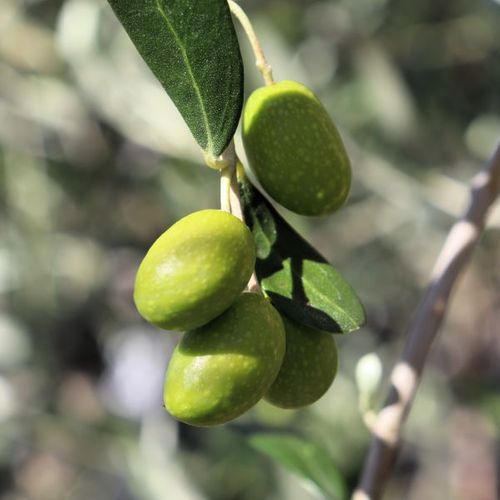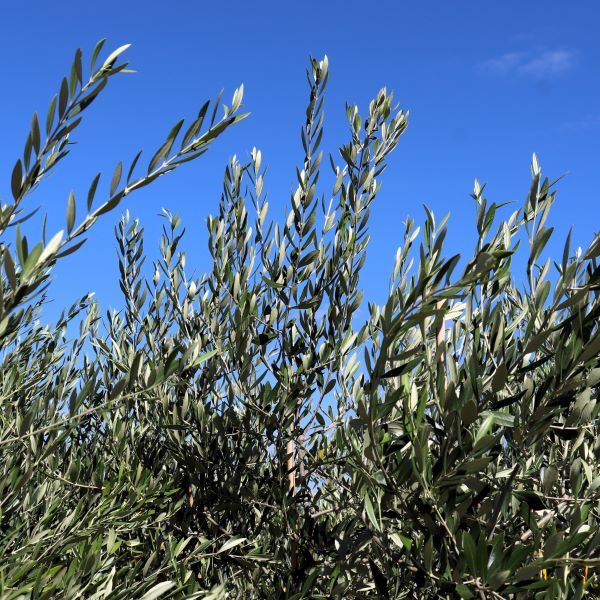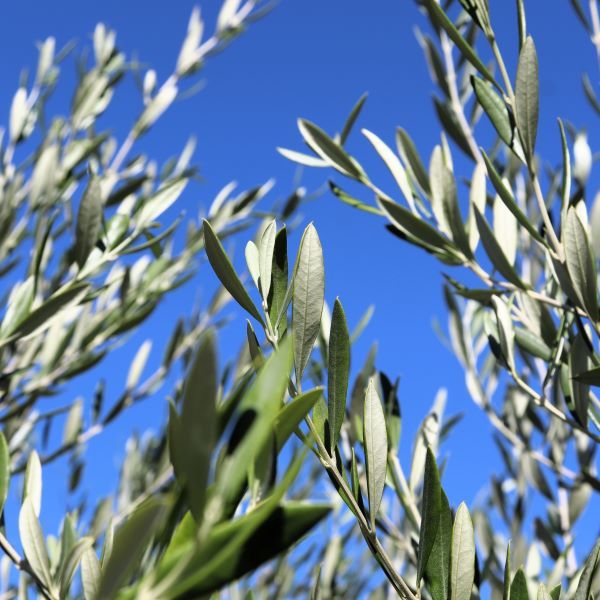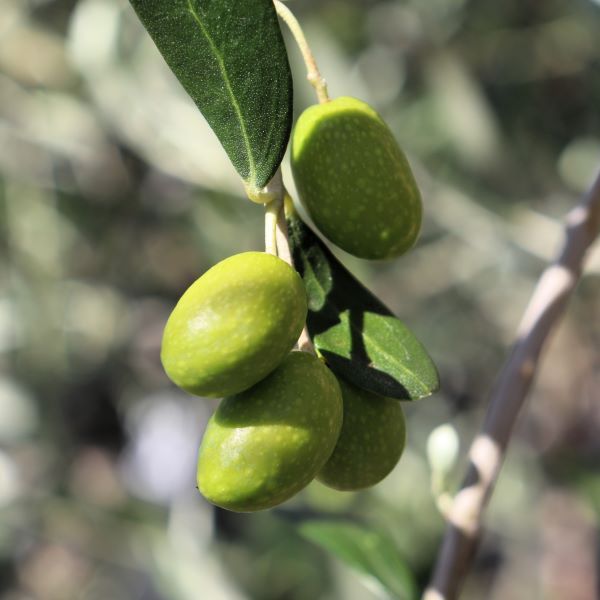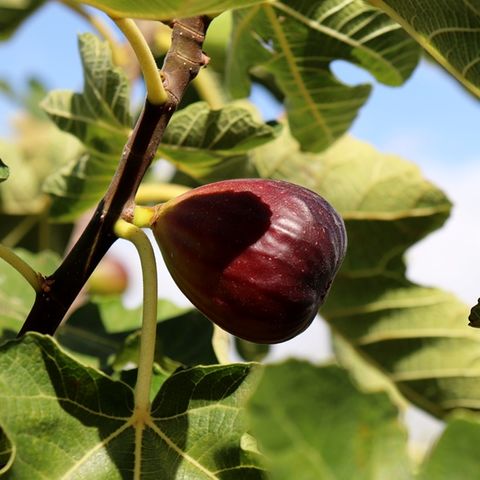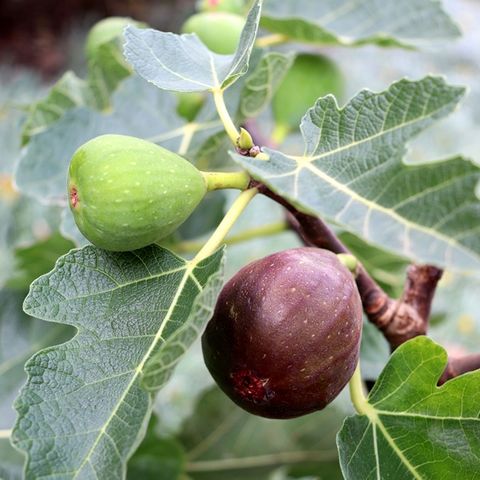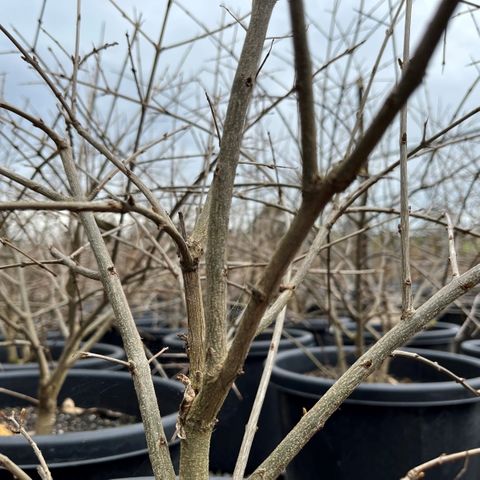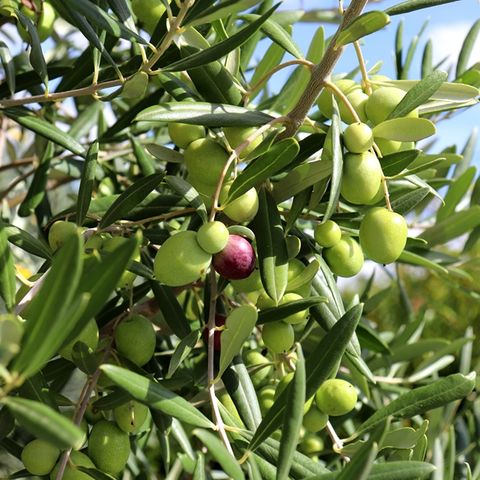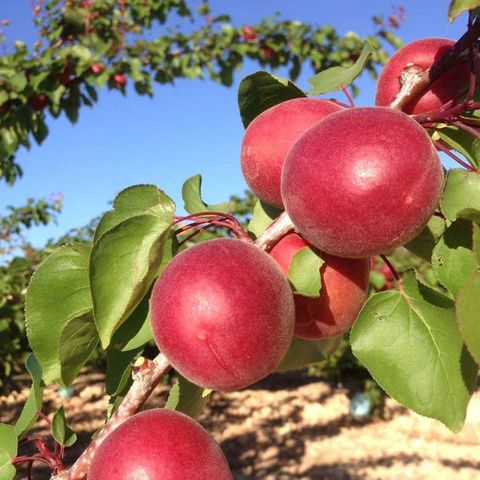Olea europaea 'Kalamata Jumbo'
An evergreen tree with a spreading growth habit and a dense canopy of silvery-green, lance-shaped leaves. The trunk becomes gnarled and textured with age, enhancing its ornamental appeal. In spring, it produces small, creamy-white flowers, followed by large clusters of fruit that transition from green to deep purple-black as they ripen. The fruit has a firm, meaty texture with a rich, slightly tangy flavour. Renowned for its superior size and quality, this variety is highly prized for table olives, often enjoyed marinated or brined.
Cultural
Full sun is essential for healthy growth and fruit production in olive trees. They thrive in slightly alkaline, sandy, or loamy soils, though they can tolerate poor, rocky conditions. Once established, olive trees are drought-tolerant, but young trees require regular watering, especially during dry periods and during flowering and fruit production, particularly in containers. Prune in late winter or early spring to maintain shape and remove dead branches. While generally hardy, olive trees can be susceptible to pests like scale and fungal diseases. Olives are typically harvested in late autumn to early winter.
Landscape Uses
A symbol of peace and happiness, the olive tree has been grown for centuries for its fruit, oil, and timber. Olives are a perfect choice for Mediterranean, coastal, and low-water gardens. They are suitable for windbreaks, screens, topiary, or as specimen trees. Pair them with other plants from our Aussie Mediterranean range, such as Laurus ‘Flavour Master’ and Westringia ‘Jervis Gem’.
Dimensions
Height to 10.0m
Width to 4.0m
Can be kept significantly smaller through pruning.
Width to 4.0m
Can be kept significantly smaller through pruning.

